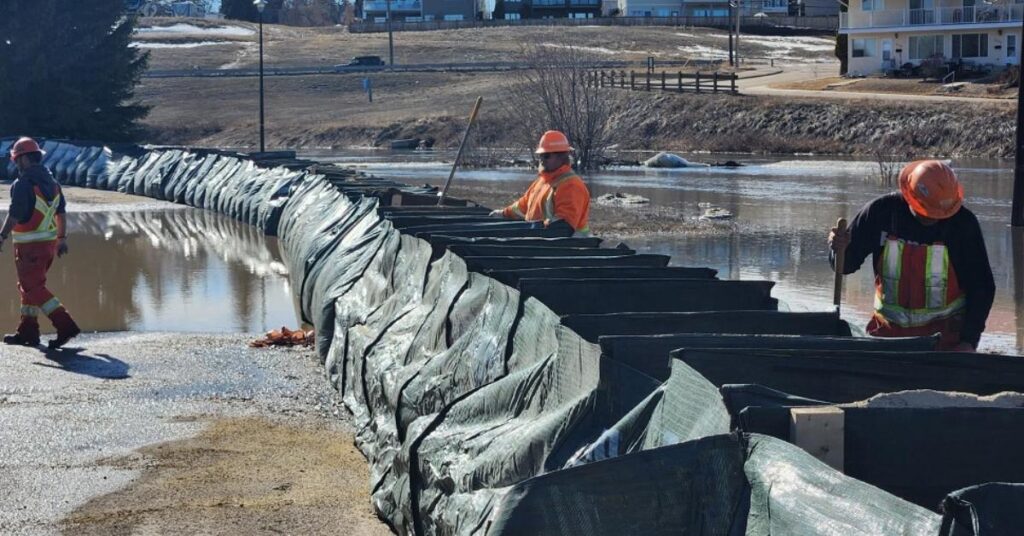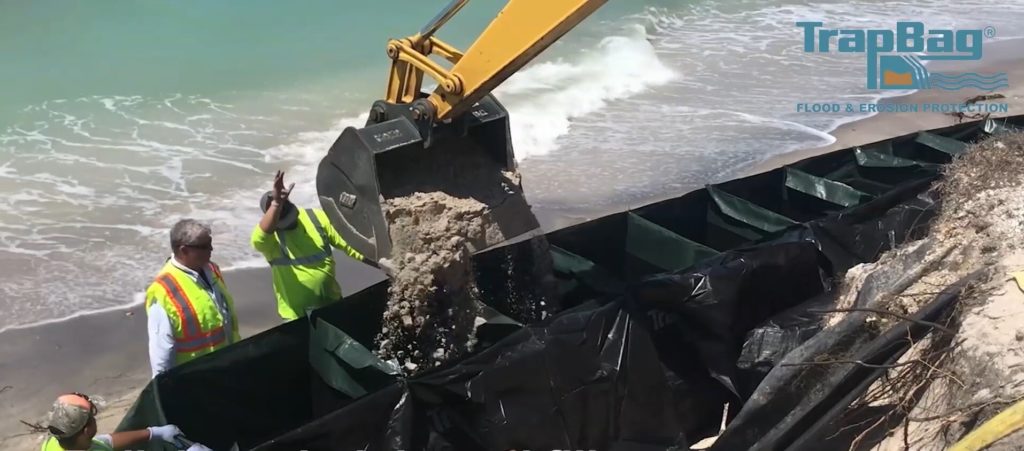Rapid-Deployment Flood Barriers: A Guide
The best-quality rapid-deployment flood barriers can make a difference for lives and property in emergencies where every minute counts.

Some flood events are more predictable than others. For the events where every second counts, rapid-deployment flood barriers can make a life-saving difference. These are some common types of quick-deploy flood barriers and how to use them.
What Are Rapid-Deployment Flood Barriers?
Rapid-deployment flood barriers are systems that protect properties from damage during flooding events. They make a massive difference in keeping homes, businesses, natural environments, and other areas safe during hurricanes, river floods, dam ruptures, and more.
Who Uses Rapid-Deployment Flood Barriers?
Anyone, from state agencies to property managers, can use flood barriers to protect properties and lives during natural disasters and other emergencies. Here are just a few of the groups that we’ve worked with to provide flood protection over the years:
- Environmental protection services
- Government agencies and public works departments
- Emergency management organizations
- Construction companies
- And more
Types of Deployable Flood Barriers
Sandbags
People have used sandbags as a form of flood control for hundreds of years. These are relatively compact, affordable solutions that can be stacked into everything from traditional flood barriers to cofferdams.
However, despite seeming cost-effective at first glance, sandbags come with a larger margin of error than other, more innovative options. This makes it more likely that they’ll collapse when they’re needed most and lead to tens of thousands of dollars in damage during major flooding events.
Inflatable Barriers
As the name suggests, inflatable barriers can be filled with air in a pinch to divert water away from structures. Some inflatable flood barriers have to be filled with an air pump before deployment, while others activate on contact with water.
While inflatable water barriers are an effective rapid-deploy solution for homeowners and property managers, they’re impractical for large-scale uses. They also aren’t as versatile as other types of barriers.
Water-Filled Barriers
Similar to inflatable barriers, water-filled barriers use water to protect vulnerable sites from flooding. Because they’re heavy enough to withstand rapidly flowing floodwaters, they can keep properties safe by diverting water away from low-lying areas.
However, water-filled barriers aren’t always the best solution during emergencies. For example, most water barriers require electric- or fuel-powered pumps for deployment—which may not be available during the event. You may also need multiple pumps to fill the barrier quickly. On top of all that, if debris or sharp objects pierce even one part of the barrier, the entire structure will lose all its water and collapse.
TrapBags
TrapBag consists of pentagon-shaped bags made from high-durability textiles that are interconnected to form a barrier. Each bag is sloped on one side, vertical on the other, and open at the top. The cells are watertight and lend their strength to the other cells, without compromising the durability of neighboring cells.
Setting up TrapBag requires just three easy steps:
- Open the packaging: The entire TrapBag unit comes folded in its packaging. Remove it from the package and stretch the barrier out to its desired length, up to 50 feet.
- Fill the cells: A small team of people can do this either manually with shovels and buckets or all at once with two people and a skid steer or dump truck. We recommend filling TrapBag with sand, gravel, or concrete.
Place or stack the barrier where needed: Place the TrapBag wherever you need it to block floodwaters altogether or use it to divert water. You can also stack the units if the water is expected to far surpass flood stage.

Why Use TrapBags?
TrapBag improves the design of more traditional flood barriers in several ways that can save precious time when it matters most, without compromising security. Here are just a few of the reasons why TrapBag makes a better floodwater barrier:
- Easier to fill: It can take dozens of people hours or days to build a traditional sandbag barrier—giving them less time to evacuate or prepare for the storm individually. However, a team of two people using a skid steer or other heavy equipment can finish building a TrapBag barrier within a few hours.
- Uses less material: Compared to a stacked sandbag wall of the same size, a TrapBag barrier uses 40 percent less fill material. A single 100-foot section of 4-foot TrapBags replaces roughly 8,000 sandbags.
- Less likely to break: TrapBag won’t give way as easily as sandbag barriers and has been fully tested by the U.S. Army Corps of Engineers.
Where Have TrapBags Been Deployed?
TrapBag barriers are used around the world to protect natural habitats, residential areas, and commercial properties. From shoreline flood mitigation in Chicago to beach restoration in Kenya, TrapBag is the barrier of choice when it matters most.
Get a Free Quote on TrapBags
Looking for a more effective flood barrier system that you can deploy with ease? We can help. Get a free quote for your TrapBag flood barrier systems today.
Meet the author
Get the Dirt Before the Flood Hits
Stay ahead of flooding, erosion, and disaster response challenges. The Dirt, TrapBag’s monthly newsletter, delivers field-tested tips, real-world case studies, and the latest in barrier technology straight to your inbox.

